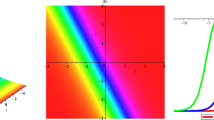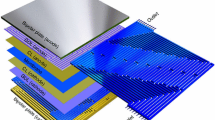Abstract
The electrical breakdown behavior of the giant algal cell Halicystis parvula was studied in order to predict the optimum conditions for electrically induced cell-to-cell fusion. Using the charge pulse technique, the membranes were charged at different pulse lengths to the maximum voltage Vc. Because of a reversible, high-conductance state of the membrane (electrical breakdown), it was not possible to exceed the critical membrane breakdown potential. The breakdown voltage exhibited a strong dependence on the charging time (pulse length) between 10 μs and 100 μs. Below 10 μs the breakdown voltage of the two membranes, tonoplast and plasmalemma, assumed a constant value of about 1.9 V, whereas above a pulse length of about 100 μs the breakdown voltage was nearly constant with a value of about 0.6 V. The extreme values for the breakdown voltage at very short and at very long charging times agree fairly well with results which have been obtained on cells of Valonia utricularis and planar lipid bilayer membranes. However, the pulse length dependence of the breakdown voltage was found to be quite different in H. parvula. In addition, the membrane conductance increase during breakdown in H. parvula cells is much more pronounced than in membranes of V. utricularis, but similar to lipid bilayer membranes. From this result it is suggested that the membrane structure of H. parvula is quite different from V. utricularis (larger lipid domains).
Similar content being viewed by others
References
Benz, R., Beckers, F., Zimmermann, U. (1979) Reversible electrical breakdown of lipid bilayer membranes: A charge-pulse relaxation study. J. Membr. Biol. 48, 181–204
Benz, R., Läuger, P. (1976) Kinetic analysis of carrier-mediated ion transport by the charge-pulse technique. J. Membr. Biol. 27, 171–191
Benz, R., Läuger, P., Janko, K. (1976) Transport kinetics of hydrophobic ions in lipid bilayer membranes. Charge pulse relaxation studies. Biochim. Biophys. Acta 455, 701–720
Benz, R., Zimmermann, U. (1980) Pulse-length dependence of the electrical breakdown in lipid bilayer membranes. Biochim. Biophys. Acta 597, 637–642
Gauger, B., Bentrup, F.W. (1979). A study of dielectric membrane breakdown in the Fucus egg. J. Membr. Biol. 48, 249–264
Gimmler, H., Schirling, R., Tobler, U. (1977) Cation permeability of the plasmalemma of the halotolerant alga Dunaliella parva. Z. Pflanzenphysiol. 83, 145–148
Graves, J., Gutknecht, J. (1976) Ion transport studies and determination of the cell wall elasticity in the marine algae Halicystis parvula. J. Gen. Physiol. 67, 579–597
Gutknecht, J., Hastings, D.F., Bisson, M.A. (1978) Ion transport and turgor pressure regulation in giant algal cells. In: Membrane transport in biology, pp. 125–174, Giebisch, G., Tosteson, D.C., Ussing, H.H., eds. Springer Verlag, Berlin Heidelberg New York
Kauss, H. (1978) Osmotic regulation in algae. In: Progress in phytochemistry, Vol. 5, pp. 1–27, Reinhold, L., Harborn, J.B., Swain, T., eds. Pergamon Press, Elmsford, N.Y.
Scheurich, P., Zimmermann, U. (1981) Giant human erythrocytes by electric field induced cell-to-cell fusion. Naturwissenschaften 68, 45–46
Zimmermann, U. (1981) Cellular drug-carrier systems and their possible targeting. In: Targeted drugs, Goldberg, E., Donaruma, L., Vogl, O., eds. John Wiley and Sons, New York, in press
Zimmermann, U., Beckers, F., Coster, H.G.L. (1977) The effect of pressure on the electrical breakdown in the membranes of Valonia utricularis. Biochim. Biophys. Acta 464, 399–416
Zimmermann, U., Benz, R. (1980) Dependence of the electrical breakdown voltage on the charging time in Valonia utricularis. J. Membr. Biol. 53, 33–43
Zimmermann, U., Schulz, J., Pilwat, G. (1973) Transcellular ion flow in Escherichia coli B and electrical sizing of bacteria. Biophys. J. 13, 1005–1013
Zimmermann and Stendle (1978) Physical aspects of water relations of plant cells. Adv. Bot. Res. 6, 45–117
Zimmermann, U., Hüsken, D. (1980) Turgor pressure and cell volume relaxation in Halicystis parvula. J. Membr. Biol. 56, 55–64
Zimmermann, U., Pilwat, G., Beckers, F., Riemann, F. (1976) Effects of external electrical fields on cell membranes. Bioelectrochem. Bioenerg. 3, 58–83
Zimmermann, U., Scheurich, P. (1981) High frequency fusion of plant protoplasts by electric fields. Planta 151, 26–32
Author information
Authors and Affiliations
Rights and permissions
About this article
Cite this article
Benz, R., Zimmermann, U. High electric field effects on the cell membranes of Halicystis parvula . Planta 152, 314–318 (1981). https://doi.org/10.1007/BF00388255
Received:
Accepted:
Issue Date:
DOI: https://doi.org/10.1007/BF00388255




